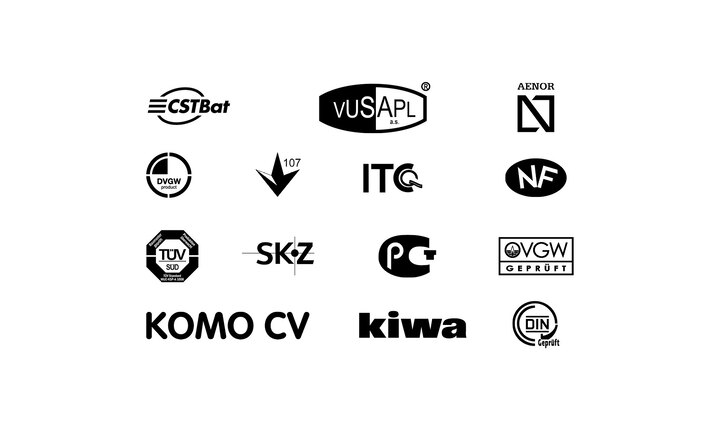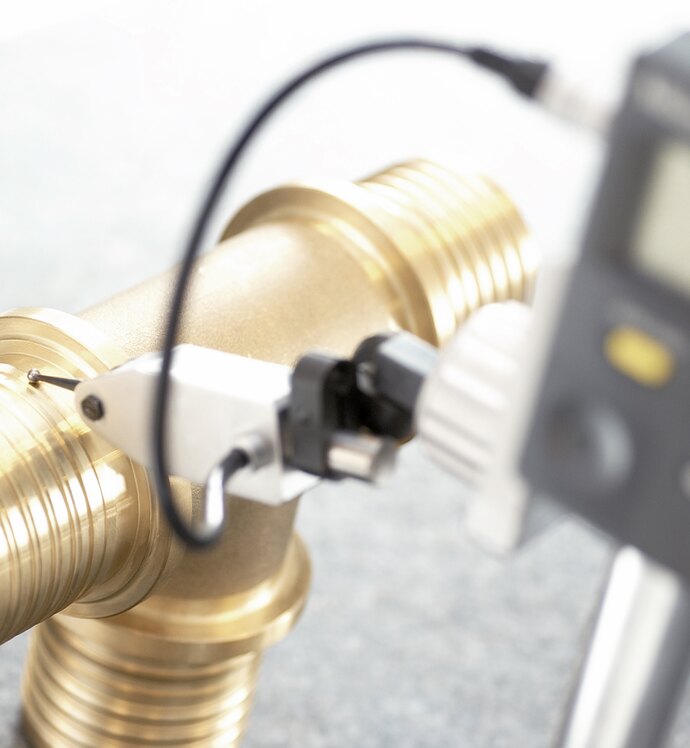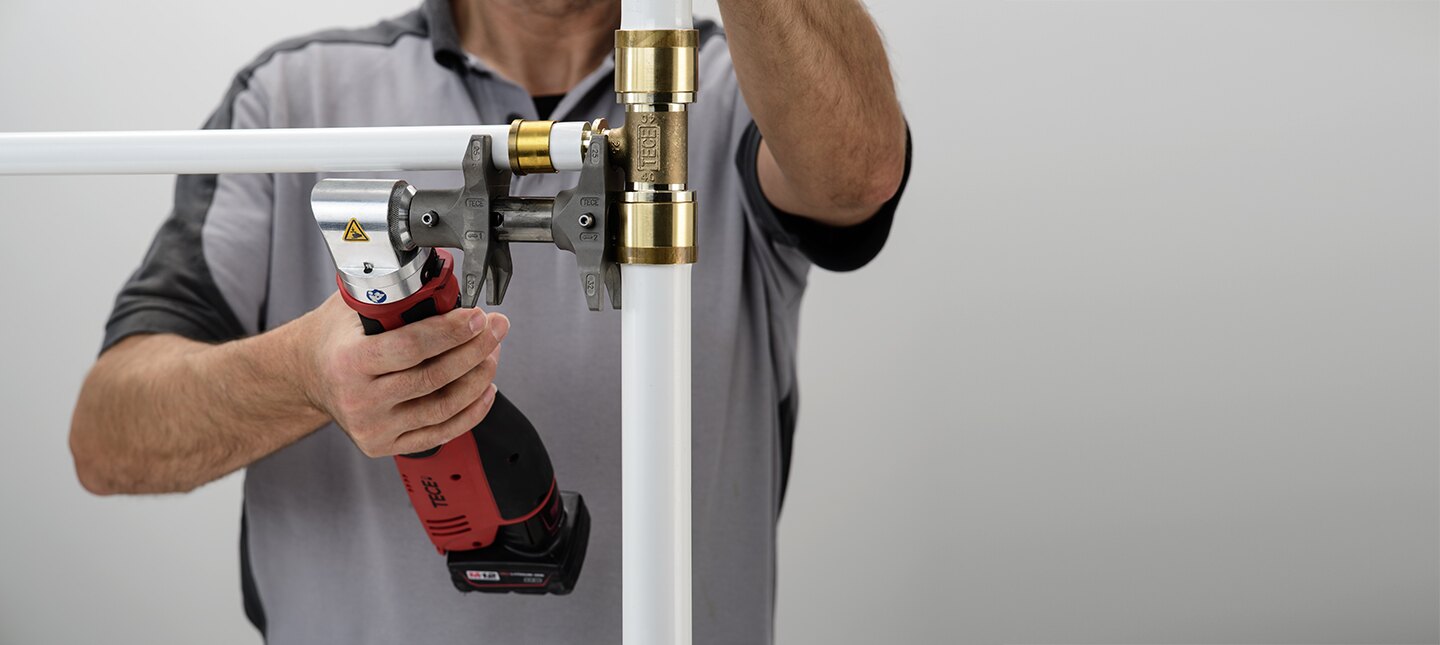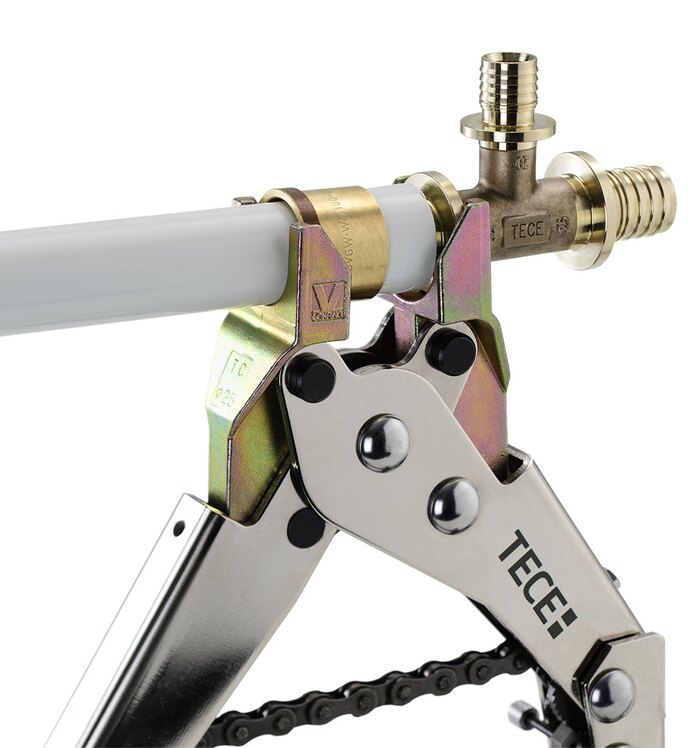The composite pipe - a breakthrough at the time
Extra thick for extra safety
The forerunner of the TECEflex multi-layer composite pipe was already available in the mid-1980s: as an oxygen-tight underfloor heating pipe encased in aluminium. At that time, however, certifications could only be obtained for all-plastic pipes. Therefore, a plastic pipe was developed as the inner pipe, which already fulfilled all pressure and temperature requirements. For dimension 16, for example, this is a 16 x 2.1 mm inner pipe. Today, not even the standard aluminium multilayer pipes are that thick! On top of this inner pipe, which was already completely pressure-resistant, further layers of aluminium and polyethylene were applied. The result: an extra safe composite pipe system.
Even if the outer skin were to wear down through the aluminium on the construction site or scratches were to go right through the aluminium, this would not be a problem. TECEflex still remains the pressure-resistant inner pipe, which already meets all the requirements for composite pipes!
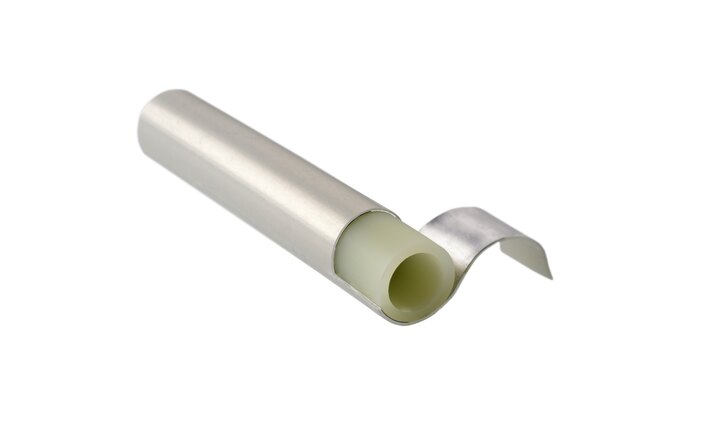
Wall thicknesses in comparison
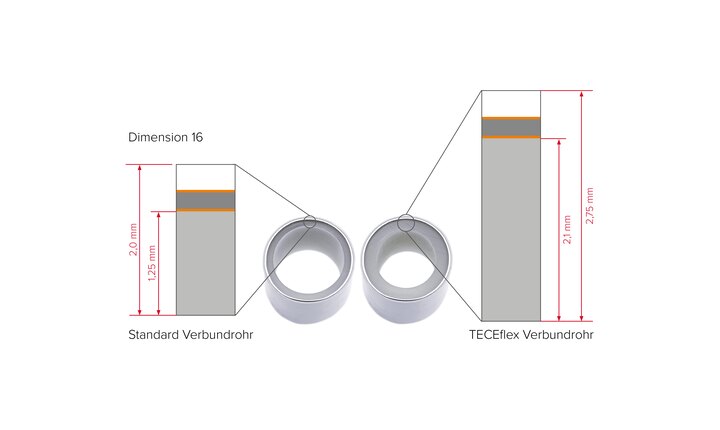
TECEflex PE-Xc/Al/PE-RT multi-layer composite pipe: the best of both worlds
The TECEflex multi-layer composite pipe is the ideal combination of plastic and metal. Even the electron beam cross-linked inliner is extremely pressure and temperature resistant. In addition, the aluminium coating ensures 100% oxygen tightness and excellent dimensional stability. And with the white outer coating, the multi-layer composite pipe is also perfectly equipped for use in visible areas.
What makes a multilayer composite pipe so special?
A multi-layer composite pipe consists of - as the name suggests - several layers. Each layer has a special protective function, which makes the composite pipe enormously durable in the overall system. While the inner pipe layers protect against corrosion and prevent oxygen penetration, the outer protective coating protects against damage on the construction site.
A small scratch makes all the difference
In order to simulate a construction site scratch, a commercial aluminium composite pipe 16 x 2.0 mm and a TECEflex multilayer composite pipe DIM 16 (17 x 2.75) were each cut 0.5 mm deep in the longitudinal direction in a laboratory test. Subsequently, the requirements of ISO 10508 - application class 2: hot water supply 70 °C - were used as a basis for a creep test. This requires an accident load capacity of 95 °C over 100 hours at 10 bar (potable water).
The result: the standard aluminium composite pipe burst after just 4:09 hours, while the TECEflex multi-layer composite pipe withstood without any problems. After more than 1,200 hours, the test was completed without rupture, because on the basis of the standard curves, rupture would only be expected in well over a hundred years.
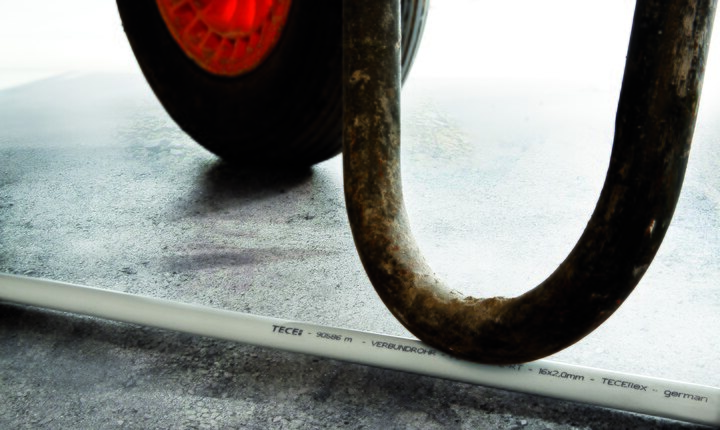
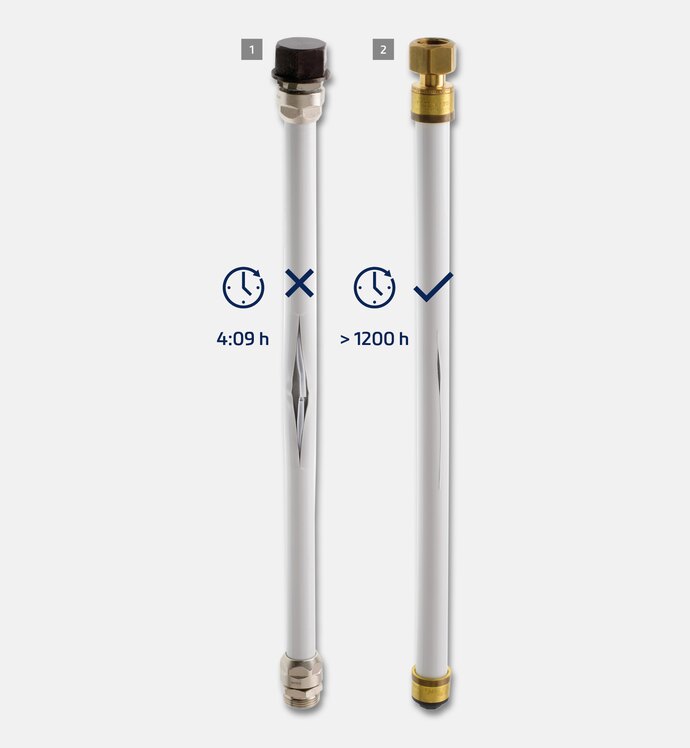
Minimum bending radius - maximum stability
Our composite pipe with sliding sleeve system inspires with flexible stability. This makes it particularly easy to handle. Because in order to fully utilise the minimum bending radius, a bending tool is also required for a TECEflex pipe. However, the TECEflex pipe is normally bent using only your thumb. For everyday work, the thumb is completely sufficient as a tool, as the TECEflex composite pipe is much less prone to kinking. Try it for yourself!
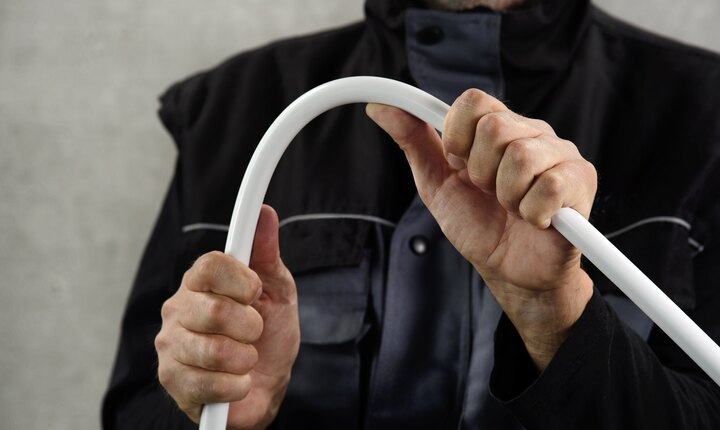
Tested and certified
The TECEflex composite pipe can be used for the installation of potable water, heating, gas and compressed air. In order for a pipe system to be approved for potable water, heating or even the gas sector, the various requirements of the regulators must be met. In Germany, this is defined by the DVGW (German Technical and Scientific Association for Gas and Water), among others. These tests are carried out both internally in TECE's own laboratory and externally in various renowned institutes.
Our goal: consistently high product and connection quality.
